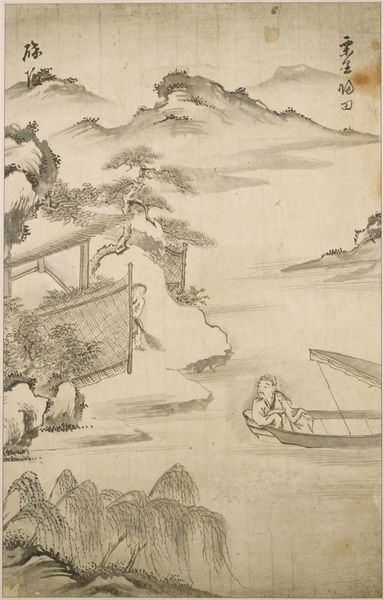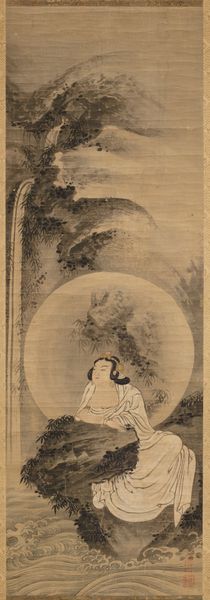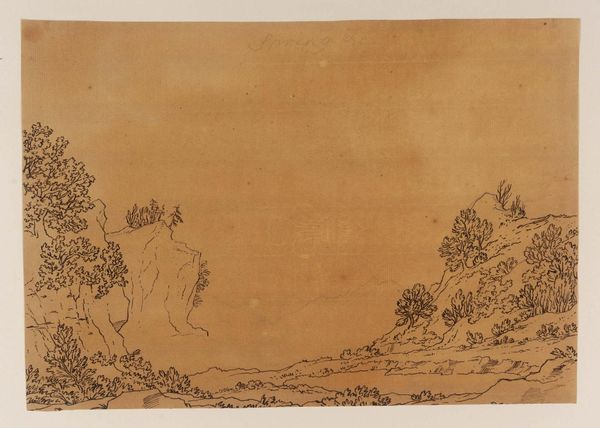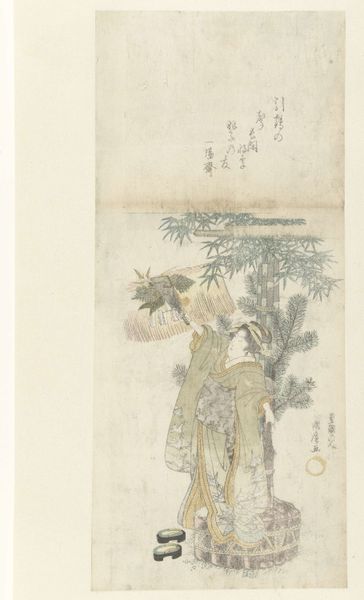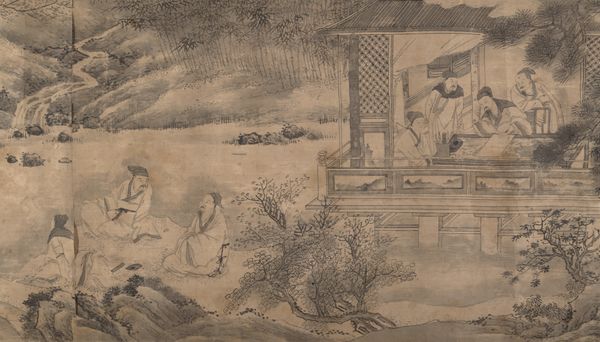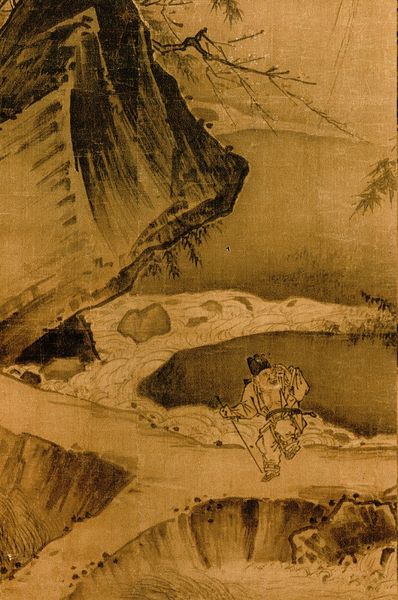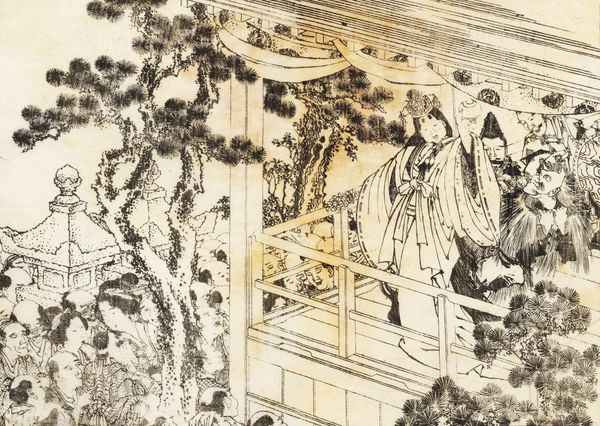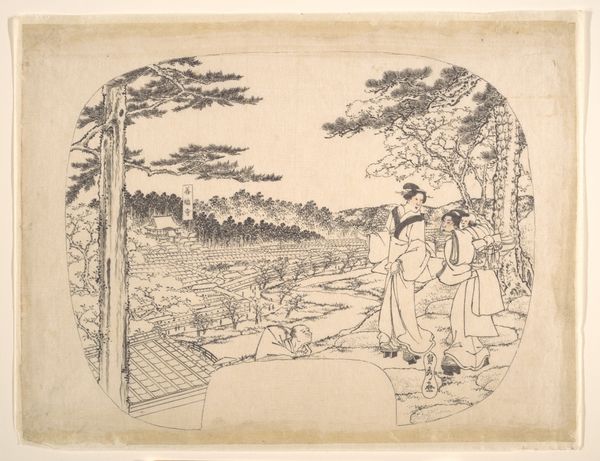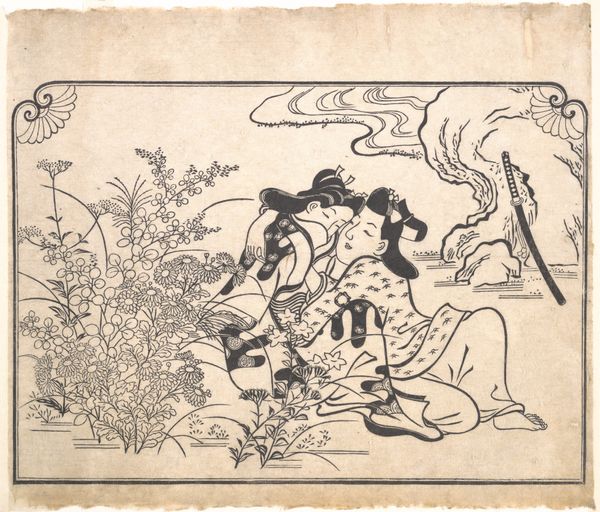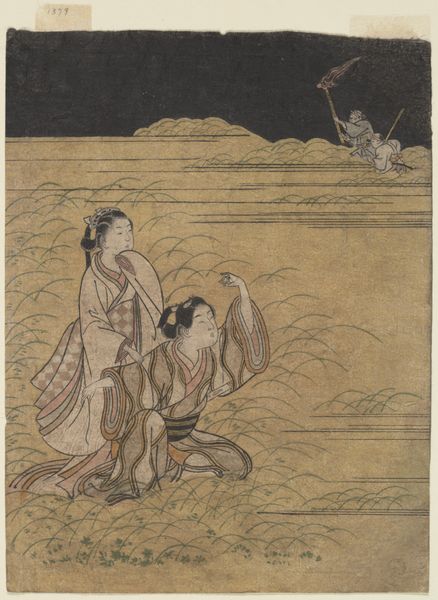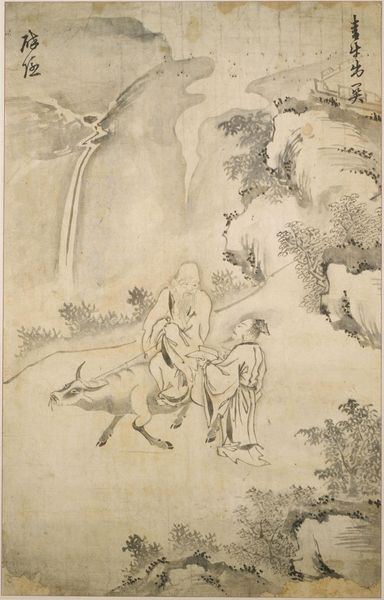
Bo Le [right of a pair of the Legends of Xu You c. early 1760s
0:00
0:00
painting, paper, ink-on-paper, ink
#
narrative-art
#
painting
#
asian-art
#
landscape
#
japan
#
figuration
#
paper
#
ink-on-paper
#
ink
#
orientalism
#
history-painting
Dimensions: 15 1/2 × 103 in. (39.37 × 261.62 cm) (image)15 1/2 × 109 in. (39.37 × 276.86 cm) (outer frame)
Copyright: Public Domain
"Bo Le," created by Soga Shōhaku in the 18th century, is painted with ink on paper, a traditional method in East Asian art. But it’s Shōhaku’s distinctive approach to these materials that really grabs your attention. Look at the way he’s applied the ink. It’s not just about depicting a scene; it's about texture and movement. Notice the rugged mountains and the swirling clouds, all rendered with such dynamic brushwork. You can almost feel the energy in each stroke. This wasn’t just about replicating what he saw, but about interpreting it through the very act of painting. Shōhaku was part of a movement that challenged conventional artistic norms, and instead embraced individuality and expression. You can appreciate how his engagement with these materials reflects a broader cultural impulse. His process encourages us to consider not just what is shown, but how the artwork was brought into being.
Comments
minneapolisinstituteofart about 2 years ago
⋮
Soga Shōhaku was celebrated in his own life for his unorthodox, peripatetic lifestyle and for the ease with which he could transform his painting style on a whim. But he was also a deeply studious painter who was fluent in a variety of classical Japanese and Chinese painting styles and had a vast knowledge of traditional painting subjects. In this pair of half-height folding screens, he combines illustrations of two stories about wise misfits from Chinese legend: a pair of insightful recluses, Xuyou and Chaofu, at right, and a famous judge of horses, Bole, at left. Shōhaku’s unconventional pictures, with their bold compositions, grotesque trees and pillars, and comically drunken old men, belie the serious philosophical underpinnings of the legends themselves, both of which appear in the Zhuangzi, a foundational Daoist text written in China in the 300s B.C.E.
Join the conversation
Join millions of artists and users on Artera today and experience the ultimate creative platform.
